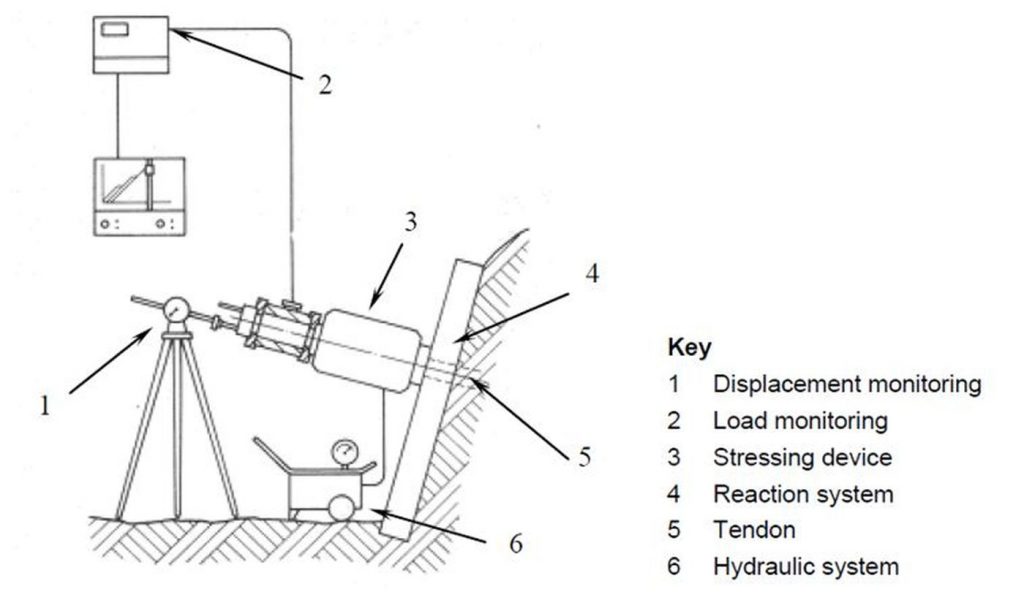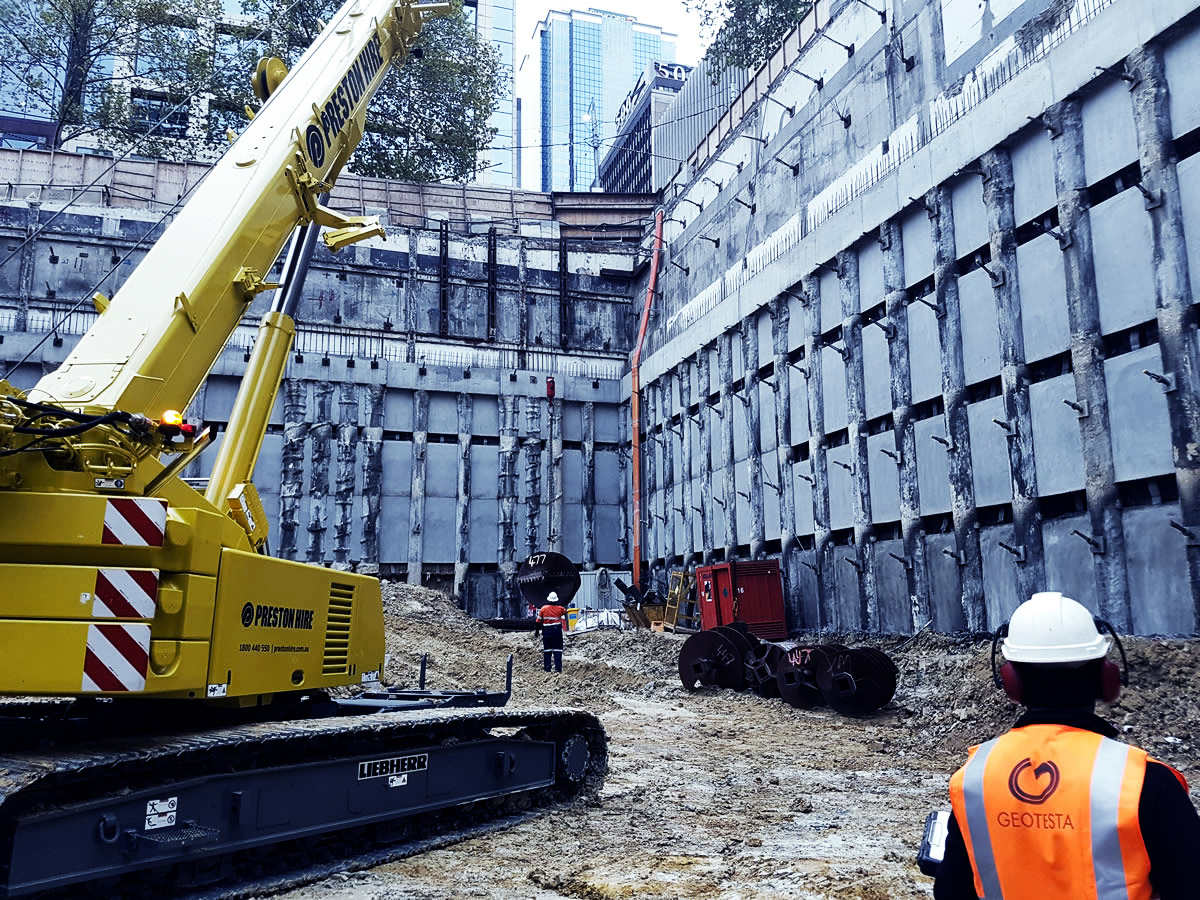Exactly How Durable Earth Anchors Job: A Comprehensive Guide to Soil Anchoring Solutions
Sturdy Earth anchors play an important role in offering stability and support in different building and construction applications. By installing deeply into the ground, they withstand upright and lateral pressures efficiently. Various kinds of anchors deal with different soil problems, making them flexible. Recognizing their technicians and installation methods is important for maximizing efficiency. What aspects affect their performance, and exactly how do they compare to conventional approaches? The solutions may stun you.
Comprehending Sturdy Earth Anchors
Sturdy Earth supports work as important parts in various building and landscaping projects, providing security and support in difficult soil problems. These anchors operate by being installed into the ground, where they withstand side and vertical pressures. Their layout allows for protected attachment to structures, ensuring they remain anchored against dirt movement or external loads.The effectiveness of durable Earth supports largely relies on the type of soil and the anchor's installation deepness. Appropriate setup methods are critical, as they figure out the support's holding capacity. Environmental elements, such as wetness and freeze-thaw cycles, can likewise impact performance.These anchors are often utilized in applications ranging from safeguarding fencings and preserving wall surfaces to supporting short-term structures during unfavorable weather condition problems. Comprehending the concepts behind heavy-duty Earth supports is crucial for experts looking for to enhance the resilience and safety of their tasks.
Kinds of Heavy-Duty Earth Anchors
Different kinds of heavy-duty Earth anchors are created to fulfill certain requirements based upon dirt conditions and job demands. Helical anchors, featuring screw-like blades, are efficient in softer dirts, using high lots abilities and easy installment. Driven anchors, which are inculcated the ground, appropriate for rocky surfaces and provide instant load support. Tie-back anchors are typically utilized in preserving wall applications, allowing for lateral assistance by securing into the ground at an angle. Another type is the cast-in-place support, suitable for concrete applications, as they are integrated right into structures for improved stability. Soil screw supports are flexible options that can be made use of in different dirt kinds, giving trustworthy tension and compression abilities. Each type serves distinctive applications, making sure security and security in building and construction and landscape design tasks. Understanding these alternatives enables informed decisions in choosing the ideal Earth securing option.
The Mechanics of Dirt Anchoring

Understanding the mechanics of soil anchoring requires an examination of different kinds of Earth supports and their installment techniques. Each anchor type provides special characteristics that affect its efficiency in different dirt problems. Correct installation techniques are crucial for optimizing the securing system's stability and efficiency.
Kinds of Earth Anchors
Earth supports, essential elements in soil anchoring systems, can be found in a number of types, each created for details applications and dirt conditions. The most usual kinds include screw supports, which are twisted into the ground, providing solid lateral resistance. Helical anchors include blades that allow for reliable installment in various dirt kinds, making them appropriate for both momentary and permanent applications. Driven anchors, commonly made from steel, are inculcated the dirt and work in rocky or dense atmospheres. Auger anchors use a helical layout to facilitate installation in softer soils. Lastly, plate anchors include a flat plate buried horizontally, dispersing load over a larger area, suitable for applications needing high lots abilities in natural soils.
Installation Methods Explained
Proper installation techniques are crucial for the efficiency of soil anchoring systems. The procedure typically begins with website evaluation, confirming the picked area can support the anchor's load. After identifying the correct anchor type, correct hole depth and angle need to be established. The installment involves driving the anchor into the ground using specific tools, such as manual or hydraulic drivers, to attain finest embedment. Post-installation, tensioning the anchor is essential to assure stability; this is frequently validated with lots screening. Additionally, surrounding dirt problems must be kept track of to avoid displacement. Following these methods not only improves the support's performance however additionally prolongs its lifespan, see it here giving trusted support for various applications.
Applications of Heavy-Duty Earth Anchors
While durable Earth anchors are often linked with building and landscaping, their flexibility includes a variety of applications across various markets. In civil design, they give vital assistance for preserving wall surfaces, making certain security in areas vulnerable to soil disintegration. The aquatic sector utilizes these anchors for securing anchors and marinas, preventing motion brought on by currents and tides. Additionally, in the telecommunications market, heavy-duty Earth supports are substantial for supporting cell towers and various other tall frameworks against wind pressures. Agricultural applications additionally benefit, as these supports can protect frameworks like greenhouses and livestock fence, ensuring they endure rough weather problems. Furthermore, in eco-friendly power tasks, such as wind farms, Earth supports play an essential function in securing wind turbine foundations, improving overall safety and efficiency. This broad array of applications highlights the versatility and integrity of durable Earth anchors throughout various areas.
Advantages Over Traditional Anchoring Techniques
Although standard anchoring approaches have actually long been depended upon for stability, heavy-duty Earth anchors offer significant advantages that boost efficiency and effectiveness. One significant advantage is their remarkable load-bearing ability, which permits them to stand up to greater pressures without failing. This stamina makes them perfect for requiring applications, such as in construction and energy installations.Additionally, durable Earth supports are made for deeper setup, offering better security in numerous dirt conditions, consisting of sandy or loosened dirts. Their resistance to corrosion and environmental aspects ensures a longer lifespan and decreased upkeep expenses contrasted to traditional methods.Moreover, these supports can be installed with very little disruption to the surrounding area, preserving the honesty of the landscape. Generally, durable Earth supports provide a effective and trustworthy solution for anchoring demands, exceeding the constraints typically associated with traditional anchoring techniques.
Installment Process and Ideal Practices
The installation procedure for soil anchoring solutions starts with complete preparation and site evaluation to ensure peak efficiency. Following this, a step-by-step setup overview offers clear directions for efficient implementation (Manta Ray anchors). Abiding by these finest practices is essential for attaining long-lasting and reputable anchoring outcomes
Prep Work and Website Analysis
Efficient prep work and complete site analysis are crucial steps in the installment of dirt securing remedies. Prior to installation, the dirt kind should be analyzed to identify its bearing ability and suitability for anchoring. Performing a geotechnical study can give essential details about dirt structure, wetness degrees, and prospective ground activity. Furthermore, identifying existing structures, greenery, and energies is necessary to prevent disturbance throughout installation. The location must be removed of debris and barriers to ensure safe accessibility for tools. Weather condition problems ought to likewise be kept an eye on, as adverse problems can influence both safety and security and installment efficacy. By meticulously preparing the site and view website evaluating all pertinent elements, the probability of effective support efficiency is substantially raised.
Step-by-Step Installment Overview
A comprehensive installation procedure is crucial for accomplishing excellent efficiency of soil anchoring solutions. The installment starts with picking the suitable support kind and guaranteeing the site is clear of debris. Next, correct opening placement is identified based upon lots requirements. As soon as the area is established, holes are drilled to the defined depth and size making use of the right devices. The anchor is after that put right into the opening, making sure it is lined up correctly. After securing the anchor, soil is backfilled and compressed to boost stability. It is essential to follow maker standards throughout the procedure. A post-installation inspection verifies that the anchors are effectively positioned and operating as intended, supplying reliable support for the desired application.

Upkeep and Inspection of Earth Anchors
Regular upkeep and examination of Earth anchors are essential for guaranteeing long-term efficiency and security. Regular checks permit the early discovery of problems such as corrosion, loosening up, or soil motion. Examiners need to try to find indications of corrosion or degradation on the anchor elements, specifically at find more information the connection factors. Furthermore, the bordering soil should be evaluated for disintegration or modifications in wetness content, which can influence anchor effectiveness.It is a good idea to establish a routine examination schedule, ideally at the very least annually, relying on environmental problems. Throughout evaluations, all noticeable components need to be cleansed to remove dust or particles that might hide possible issues. Any type of indicators of distress, such as turning frameworks or uncommon settling, need to motivate immediate assessment. Proper paperwork of assessments can aid in tracking anchor efficiency with time and promote prompt maintenance actions, making certain the anchors remain dependable and functional.
Often Asked Questions
What Products Are Heavy-Duty Earth Anchors Generally Made From?
Heavy-duty Earth supports are usually created from sturdy products such as galvanized steel or stainless steel, ensuring stamina and resistance to rust. These products offer resilient support and stability in various dirt conditions and applications.
Exactly How Do Dirt Problems Impact Anchor Performance?
Dirt conditions substantially affect support efficiency. Elements such as dirt type, dampness material, and compaction influence the anchor's hold and security, with cohesive soils often offering far better resistance than loose or sandy soils, affecting total efficiency.
Can Heavy-Duty Earth Anchors Be Recycled After Elimination?
Heavy-duty Earth anchors can be reused after elimination, provided they are checked for damages and wear. Correct cleansing and maintenance improve their long life, guaranteeing reliable efficiency in subsequent setups when conditions permit safe reinstallation.
What Are the Ecological Effects of Utilizing Earth Anchors?
The environmental effects of using Earth anchors include possible soil disturbance, interruption of neighborhood ecosystems, and possible contamination of groundwater. If made use of properly, their benefits frequently outweigh these problems, advertising stability in numerous applications.
How Do I Choose the Right Support for My Project?
